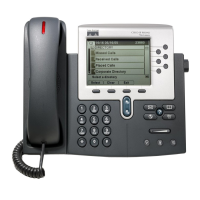Chapter 1 Product Overview
What is Session Initiation Protocol?
1-2
Cisco SIP IP Phone 7960 Administrator Guide
78-10497-02
SIP provides the capabilities to:
•
Determine the location of the target end point—SIP supports address
resolution, name mapping, and call redirection.
•
Determine the media capabilities of the target end point—Via Session
Description Protocol (SDP), SIP determines the “lowest level” of common
services between the end points. Conferences are established using only the
media capabilities that can be supported by all end points.
•
Determine the availability of the target end point—If a call cannot be
completed because the target end point is unavailable, SIP determines
whether the called party is already on the phone or did not answer in the
allotted number of rings. It then returns a message indicating why the target
end point was unavailable.
•
Establish a session between the originating and target end point—If the call
can be completed, SIP establishes a session between the end points. SIP also
supports mid-call changes, such as the addition of another end point to the
conference or the changing of a media characteristic or codec.
•
Handle the transfer and termination of calls—SIP supports the transfer of
calls from one end point to another. During a call transfer, SIP simply
establishes a session between the transferee and a new end point (specified by
the transferring party) and terminates the session between the transferee and
the transferring party. At the end of a call, SIP terminates the sessions
between all parties.
Conferences can consist of two or more users and can be established using
multicast or multiple unicast sessions.
Note
The term conference means an established session (or call) between
two or more end points. In this document, the terms conference and
call are used interchangeably.

